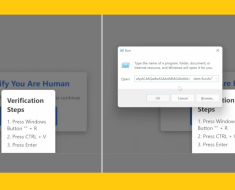Artificial Intelligence (AI) is transforming the retail landscape, especially in physical stores. By analyzing customer behavior, AI helps retailers predict future purchases, creating a more personalized and efficient shopping experience. This article explores how AI achieves this feat and what it means for both retailers and consumers.
Understanding AI in Retail


AI in retail involves using advanced algorithms to analyze vast amounts of data, enabling retailers to predict consumer behavior with remarkable accuracy. This technology processes information from various sources such as purchase history, social media interactions, and even in-store movements to provide insights that help anticipate customer needs1.
Data Collection: The Foundation of Predictive Analytics


To accurately predict customer behavior, AI systems rely on comprehensive data collection. Retailers gather data from multiple touchpoints including online platforms, in-store visits, and social media interactions. This data encompasses everything from what customers click on to what they leave in their shopping carts2. By amassing this information, AI creates detailed customer profiles that form the basis of predictive analytics.
How AI Analyzes Customer Behavior


Once data is collected, AI processes it through several stages:
- Data Labeling and Classification: AI categorizes raw data into meaningful segments.
- Pattern Recognition: Algorithms identify trends and correlations within the data.
- Predictive Modeling: Using historical data, AI forecasts future purchasing behavior3.
This sophisticated analysis enables retailers to understand not just what customers are buying but why they are making those choices.
AI-Powered Personalization


One of the most significant benefits of AI in retail is its ability to personalize the shopping experience. By analyzing customer preferences and past purchases, AI can recommend products that align with individual tastes. This personalization extends to marketing campaigns, where targeted promotions resonate more deeply with consumers4. For instance, Amazon’s recommendation engine uses AI to suggest products based on a customer’s browsing history, significantly boosting engagement and sales5.
Optimizing Inventory Management


AI doesn’t just predict what customers will buy; it also helps retailers manage their inventory more effectively. By forecasting demand with greater accuracy, retailers can optimize stock levels to avoid overstocking or stockouts6. This ensures that popular products are always available when customers want them, improving overall satisfaction.
Enhancing In-Store Experiences


In physical stores, AI enhances the shopping experience by analyzing customer movement and interactions. Retailers use video analytics to study how customers navigate store layouts and which products they engage with most frequently. This information allows retailers to optimize store layouts and product placements to encourage additional purchases7. Moreover, digital signage can offer personalized promotions based on a shopper’s previous purchases or loyalty program data8.
Real-Time Pricing Adjustments


Dynamic pricing is another area where AI excels. By analyzing market trends and customer behavior, AI can adjust prices in real-time to maximize revenue while remaining competitive9. This flexibility allows retailers to offer discounts on slow-moving items while maintaining higher prices on best-sellers.
Improving Customer Support with AI


AI-powered chatbots and virtual assistants streamline customer service by providing quick responses to common inquiries. These tools use natural language processing to understand customer queries and offer relevant solutions without human intervention10. As a result, human support agents can focus on more complex issues, enhancing overall service efficiency.
Addressing Privacy Concerns


While the benefits of AI in retail are clear, privacy concerns remain a significant challenge. Customers are increasingly aware of how their data is used, prompting retailers to adopt transparent practices. Clear communication about data collection methods and the benefits of personalized experiences can help build trust with consumers11.
The Future of AI in Retail
As technology continues to evolve, the role of AI in retail will only expand. Future advancements may include even more sophisticated predictive models and deeper integration with emerging technologies like augmented reality. Retailers that embrace these innovations will be well-positioned to meet changing consumer expectations and maintain a competitive edge.
In conclusion, AI has revolutionized how retailers understand and predict consumer behavior. By leveraging vast amounts of data, these systems provide insights that drive personalized experiences and operational efficiencies. As we move forward, the integration of AI will continue to shape the future of retail in ways we are just beginning to imagine.
Citations
1. Pavion. “AI-Powered Customer Analytics for Retail Decision Making.” Pavion.com.
2. VenD Blogs. “Using AI to Predict Customer Behavior in Retail.” Venturedive.com.
3. Talonic. “How AI Predicts Consumer Behavior for Retailers.” Talonic.ai.
4. Netguru. “Revolutionizing Retail with AI-Driven Customer Insights.” Netguru.com.
5. Invoca Blog. “How to Predict Consumer Behavior with AI in 2024.” Invoca.com.
6. Pathmonk.com. “Predictive Analytics: Anticipating Customer Behavior With AI.”
7. Isarsoft.com Article. “From Browsing to Buying: Enhancing Retail with AI-Based Customer Insights.”
8. APUS.edu Area of Study Resources. “Artificial Intelligence in Retail and Improving Efficiency.”
9. Kircova I., Saglam M.H., & Kose S.G., “Artificial Intelligence in Retailing,” USF M3 Publishing.
11. VenD Blogs. “Using AI to Predict Customer Behavior in Retail.” Venturedive.com.
Please note, that the author may have used some AI technology to create the content on this website. But please remember, this is a general disclaimer: the author can’t take the blame for any mistakes or missing info. All the content is aimed to be helpful and informative, but it’s provided ‘as is’ with no promises of being complete, accurate, or current. For more details and the full scope of this disclaimer, check out the disclaimer page on the website.




